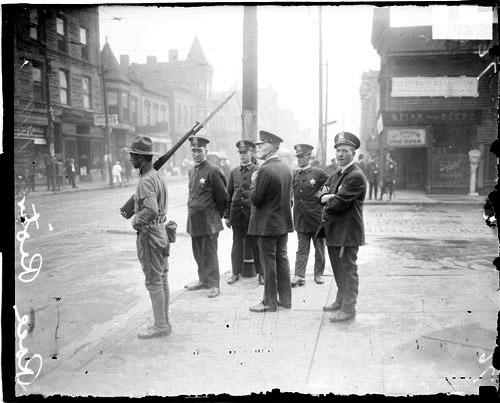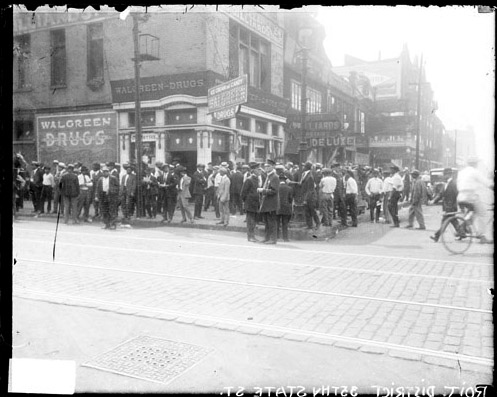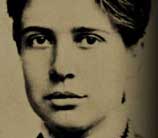View case details…
Learning From the Past, Living In the Present: Understanding Homicide in Chicago, 1870-1930 (pages 520-521) by Leigh B. Bienen & Brandon Rottinghaus
The Race riot in Chicago in the summer of 1919 left 38 dead, including twenty three black men and boys; and 537 injured, of whom 342 were black, and hundreds homeless. Race riots in other Midwestern and northern cities took place about the same time, as social tensions were aggravated by economic and labor problems after the World War I armistice.
The Coroner’s report on the riot described the events as follows: “Five days of terrible hate and passion let loose, cost the people of Chicago 38 lives (15 white and 23 colored), wounded and maimed several hundred, destroyed property of untold value, filled thousands with fear, blemished the city and left in its wake fear and apprehension for the future….”
Chicago as a national railroad hub, and with its booming industrial economy during the war, had been a magnet for black workers from the South from 1918 onward. The black population in Chicago increased 148 per cent from 1916 to 1919. The Great Migration of blacks from the South to the urban and industrial north and Midwest, encouraged by reports of available jobs in the stockyards and the meat packing industry, by the leading black American newspaper, The Defender, published in Chicago, resulted in dramatic changes in the demographics of many inner city wards, and the creation of new, vibrant black neighborhoods in the city.
The trigger for the riot was the drowning of Eugene Williams at the 298th street beach on a sweltering July afternoon. Eugene Williams was hit by a stone thrown by a white man on the breakwater. The man had been throwing rocks at the black boys in the water prior to hitting Eugene Williams, but when he was identified the police would not arrest him. Once the riot started, armed gangs roamed the street looking for people to kill. Snipers shot from encampments behind windows; and confrontations between police and citizens were violent. At one point at the corner of Wabash and 35th street, a crowd of 1,500 blacks challenged 100 armed police. At the end of two days of violence, and the burning of neighborhoods, more than 6,000 state militia had been called to the city. On the third day, twelve to fifteen thousand black men and women returned to work at the stockyards under a cover of machine guns. Although more officers, eleven, were killed in 1919 than in any year prior to that time, the only police officer killed in the riot was Patrolman John Simpson, 31, an African American working out of the Wabash Avenue Station.
The armed confrontations may have been over, but aftereffects smoldered longer than the charred remains of the burned buildings. Ironically, the beach where the black boys had gone to swim was not a segregated beach. It was called the ‘hot and cold’ beach because the effluence from the brewery and ice company nearby poured into the lake and could turn the water hot or cold. The effluent discharged was so potent in chemicals that it temporarily bleached a black person, white.
For further reading:
- William M. Tuttle, Jr., Race Riot – Chicago in the Red Summer of 1919, (Chicago, 1996) and see the valuable, “Essay on Sources,” pp. 269 - 289.
- Dominic A. Pacyga, “Chicago’s 1919 Race Riot: Ethnicity, Class and Urban Violence,” in Raymond Mohl, ed. The Making of Urban America, (2d. Ed. 1997).
- Glen E. Holt and Dominic A. Pacyga, Chicago: A Historical Guide to the Neighborhoods – The Loop and South Side, (with historical photographs) Chicago Historical Society, 1979.
- Grossman, James R. Land of Hope: Chicago, Black Southerners, and the Great Migration (Chicago, 1989) This readable, scholarly account provides an extensive analysis of both the southern roots of the Great Migration and the making (and remaking) of Chicago’s black community during the early twentieth century.
- U.S. Census, “Negro Population in the United States, 1790-1915,” Washington, Gov’t Printing Office, 1918. A special report of the U.S. Census.
- Harold F. Gosnell, Negro Politicians, U. Chicago Press, originally published 1935, reprinted with a new Introduction by James Q. Wilson, 1967. Chronicles the activities of Negroes in politics and the society in Chicago, where Negroes first entered northern politics in significant numbers. See especially, Ch. XII, “Negro Police Officers,” p.244-279.
- Spear, Allan H. Black Chicago: The Making of a Negro Ghetto, 1890-1920, (Chicago, 1967). This study emphasizes economic, demographic, and institutional conditions and chronicles the development of the city’s black community.
- St. Clair Drake and Horace Clayton, Black Metropolis, (New York, 1945). Considered by many to be the most authoritative and exhaustive study of the Negro community in Chicago.
- The Negro in Chicago (Chicago, 1922). Compiled in the aftermath of the 1919 race riot, this Report includes a detailed description of demographics, a history of race relations in the city, and an analysis of the conditions of blacks in Chicago.
- The Race Riots: Biennial Report 1918-1919 and Official Record of Inquests on the Victims of the Race Riots of July and August, 1919, Whereby Fifteen White Men and Twenty-three Colored Men Lost Their Lives and Several Hundred Were Injured. One of a number of annual reports of the Cook County Coroner’s Office.
- Elizabeth Dale, The Rule of Justice – the People of Chicago versus Zephyr Davis, (Columbia, 2001).
- Louise De Koven Bowen, The Colored Population of Chicago (Chicago: Juvenile Protective Association, 1913).


